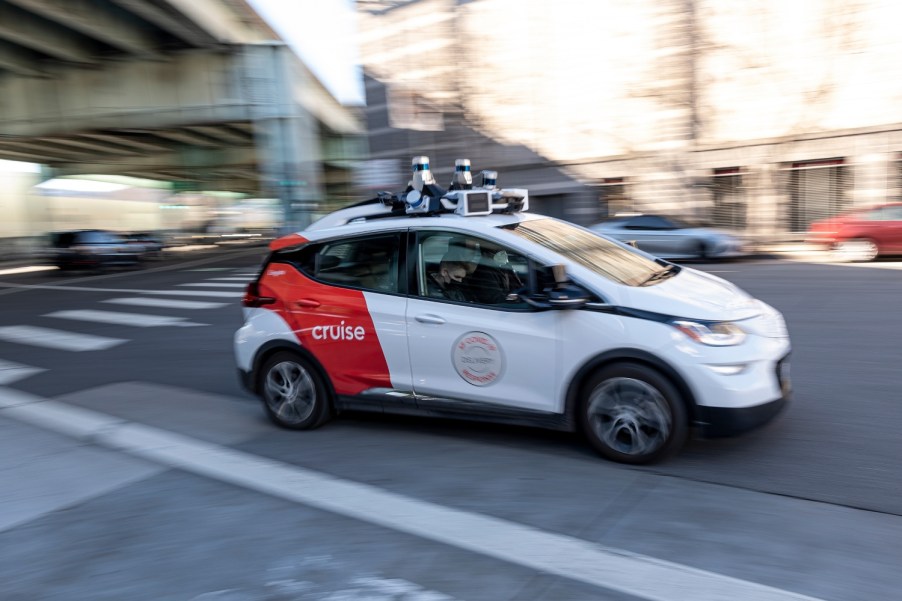
GM Cruise Autonomous Robotaxis Recalled and Updated After Accident
GM’s Cruise is the autonomous off-shoot of the brand, which has been testing its self-driving vehicles in California. The GM Cruise autonomous robotaxis were driving in California when an accident occurred. A recently released report from The National Highway Traffic Safety Administration (NHTSA) gives more insight into the situation.
The GM Cruise autonomous robotaxis crashed in June and were recalled after
According to Reuters, the accident between the GM Cruise autonomous robotaxis left two people injured. Regulators said that the software was incorrectly predicting the path of oncoming vehicles. Cruise recalled 80 of the autonomous robotaxis after the incident and vowed to update the software.
The National Highway Traffic Safety Administration has scrutinized self-driving vehicles like this after similar accidents have continued to occur. In addition, the NHTSA has been testing Advanced Driver Assistance Systems (ADAS) and how well each one works.
The NHTSA report says Cruise recalled its 80 robotaxis “to address a safety defect in its automated driving systems software.” Cruise was required by law after the accident, but the company says safety is its priority.
GM’s Cruise updated the autonomous robotaxi software
Cruise built the autonomous vehicles on the foundation of a Chevy Bolt, which has had its share of issues in the past. According to Reuters, the NHTSA “expects all manufacturers, including those developing automated driving systems, to continuously ensure that they are meeting their requirements to initiate a recall for any safety issue that poses an unreasonable risk to safety.”
For the software the GM Cruise autonomous robotaxis used, the NHTSA said it was having issues predicting the path of an oncoming vehicle while the taxi was taking an unprotected left. An unprotected left turn is when the light is green for all traffic and doesn’t have a designated green turn signal.
Cruise disabled autonomous vehicles’ ability to make unprotected left turns. It also limited the area where the vehicles could operate via geofence to ensure a safer trip.
The NHTSA safety recall report says, “this scenario would not recur after a software update”
During the investigation, a police report found the other driver at fault for the June crash. The other car traveled 40 miles an hour in a 25-mile zone, contributing to the crash. Cruise says the autonomous vehicle had to “decide between two different risk scenarios and chose the one with the least potential for a serious collision at the time, before the oncoming vehicle’s sudden change of direction.”
For now, Cruise updated the autonomous robotaxi software. Cruise says the scenario that impacted this situation will no longer be an issue after the automaker applied the update on July 6, 2022.
If you are in the San Francisco area, you may soon see the Cruise AVs on the road again. Regardless of how the world feels about autonomous vehicles, automakers already have examples on the road.



